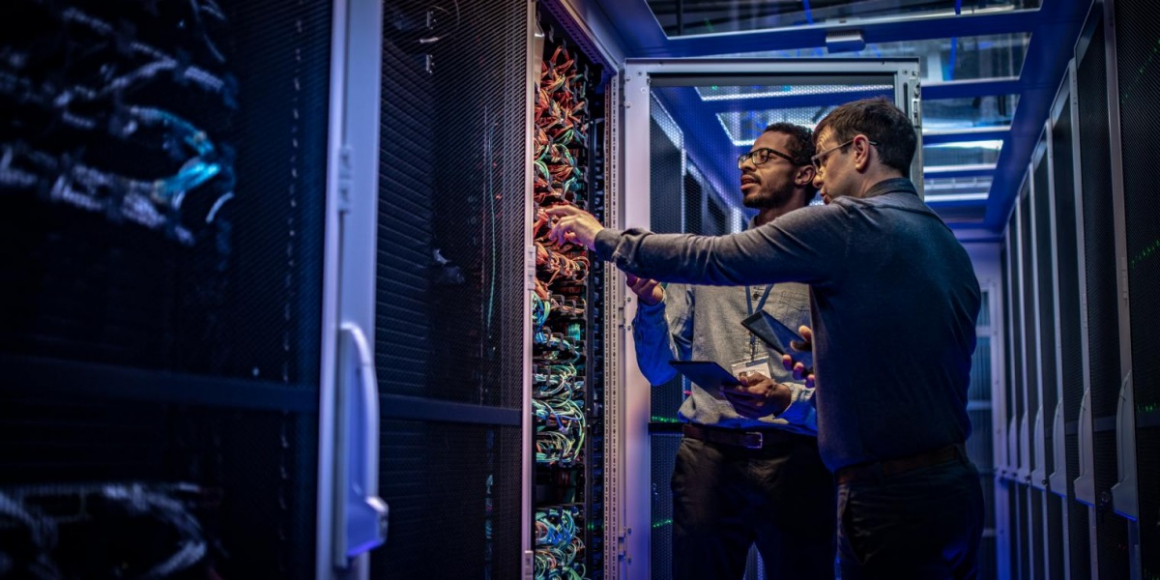Multi-employer worksites, such as colocation data centers, present a unique set of EHS compliance considerations.
Multi-employer worksites are common fixtures across a variety of industries. They offer numerous benefits but also many complexities from a health and safety standpoint. With so many stakeholders involved with these shared spaces, compliance can be a thorny issue.
Today we’re offering a primer on multi-employer worksites and what EHS leaders should know about them, with practical examples to illustrate real-world scenarios.
What Is a Multi-Employer Worksite?
A multi-employer worksite is a common site or facility where more than one employer is operating. The term has often been associated with construction, because multi-employer worksites are very prevalent in this line of work, but the setup extends much farther, spanning several verticals such as agriculture, maritime, technology, and general industry.
One emerging example in today’s world is the colocation data center, where several different companies store, maintain, and access their servers and equipment. While those in the construction industry are generally more familiar with multi-employer worksites and their nuances, this is relatively new ground for many in the tech world. As such, we thought colocation data centers would be a good example to frame this discussion around.
With this in mind, let’s explore the EHS responsibilities and compliance factors at play.
EHS Compliance in Multi-Employer Worksites
First and foremost, the key thing to understand about multi-employer worksites is that shared spaces mean shared accountability. According to the Occupational Health and Safety Administration's Multi-Employer Citation Policy (CPL 2-0.124), “more than one employer may be citable for a hazardous condition that violates an OSHA standard.”
Because of this, it’s important to approach EHS compliance in multi-employer worksite settings with a holistic and collaborative view.
Form a Cohesive Partnership with Worksite Operators and Tenants
A communicative and cooperative partnership between all parties involved with the worksite is the single most critical step toward a sustainable safe environment. According to OSHA policy, “Any employer that exposes one of its employees to the hazards created by an unsafe condition may be subject to an OSHA citation.”
In other words, covering your own bases isn’t necessarily sufficient. Employers using these worksites should build strong communication loops with their fellow tenants, and especially in the owner or operator of the facility. Ideally, the multi-employer worksite will run under one set of procedures and programs, with consistency in training and auditability. A centralized emergency response plan should be in place, at a minimum.
Maintain open channels of dialogue and consider sharing authoritative resources and documentation around safety concerns and best practices.
Equip Your Personnel with All They Need to Know
Train your employees to be proactive in recognizing potential hazards, and to keep a close eye on what’s going on with others, because it’s not a given that fellow tenants are taking the same stringent measures. Make sure you have your own program and policies in place so you aren’t relying on anyone else. The complexities of multi-employer worksite regulations and shared liabilities bring an extra level of required vigilance
Colocation data centers bring a number of EHS considerations to keep in mind. While tailoring guidance to your specific site, employees should generally be thinking about things like:
-
Electrical hazards
-
Noise and heat exposure
-
Lone working scenarios
-
Waste management
-
Lockout/tagout system responsibilities
Stay on Top of Changing Conditions
As always, EHS leaders should aspire to stay on top of trends and developments in their industry, and with multi-employer worksites in general. Rules and regulations can change, as can best practices based on outside circumstances.
The current situation serves as a prime example. Unsurprisingly, data center operators across the globe are taking steps to reduce foot traffic and postpone non-essential maintenance. Long after the unified pandemic response has lightened and the immediate danger of COVID-19 has dissipated, there will surely be lasting changes to the way we think about hygiene, cleanliness, and contamination in these settings and all others used regularly by varied individuals.
Change management is an essential aspect of the manager’s role here. When you stay informed, you can help your employees and other tenants stay informed. Again: this is a partnership and it’s important for everyone involved to be supporting one another.
If you find you’re lacking the resources to fully review every EHS procedure in the face of changing compliance requirements, engaging an EHS consultant for an independent and objective assessment can be highly beneficial.
For more information about data centers specifically, we invite you to check out our EHS & Sustainability Support for Data Centers page.
Data Centers SupportWant more news and insights like this?
Sign up for our monthly e-newsletter, The New Leaf. Our goal is to keep you updated, educated and even a bit entertained as it relates to all things EHS and sustainability.
Get e-NewsletterHave any questions?
Contact us to discuss your environment, health, safety and sustainability needs today.





